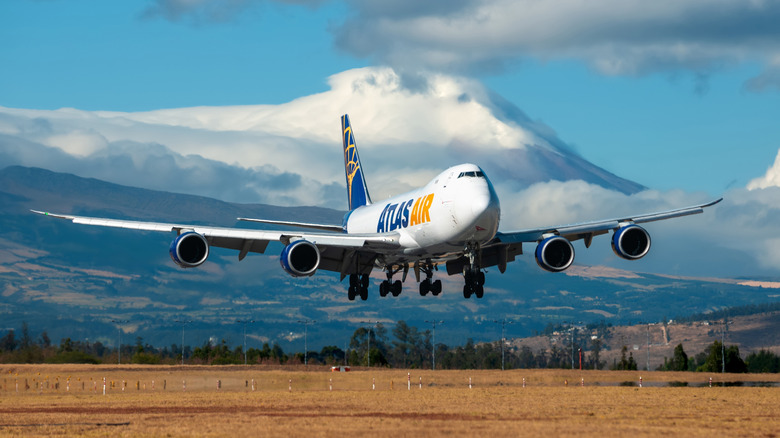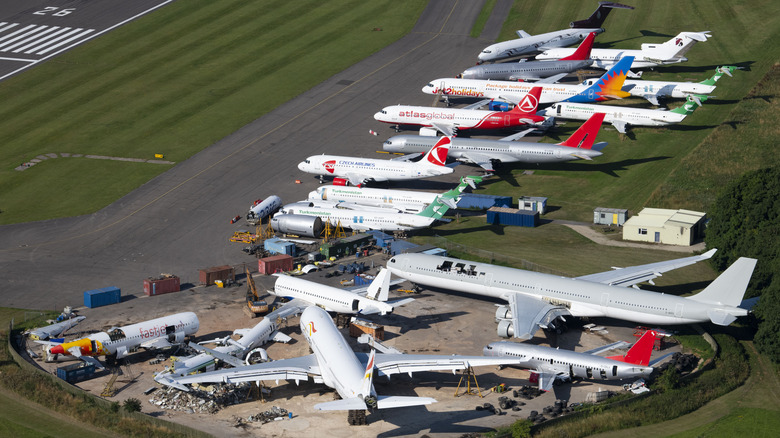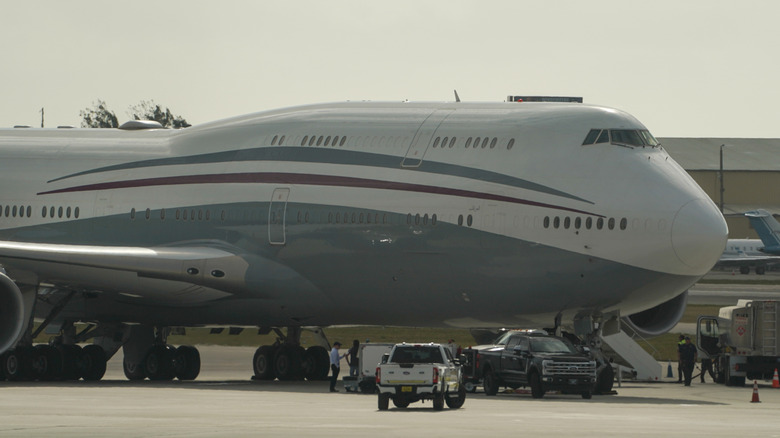Why Did Boeing Discontinue The 747 Jet?
Boeing's launch of the Boeing 747 in 1969 was a huge step forward for long-haul airline travel. It was the first wide-body airplane of its time to comfortably seat 400 passengers and could fly farther than most other jets on the market. The 747 became the flagship of international flights and was known as the "Queen of the Skies." But as time passed, more modern airplanes were being built, challenging the Queen's throne. Airline needs shifted, favoring more efficient twin-engine jets like the Boeing 777 and 787 Dreamliner, which burned less fuel, cost less to maintain, and could fly point-to-point routes without needing massive hub airports.
As the 2010s closed in, the demand for the 747 passenger variants had already fizzled out, and most production had shifted to freighter versions. At its peak, Boeing was building 70 of these airplanes every year, reduced to only five in 2022. Carriers became more conscious about costs, and when it came down to it, the big four-engine Boeing airplane no longer made economic sense. The writing was already on the wall, even before the global pandemic expedited the end.
COVID-19 delivered the final blow
The COVID-19 pandemic hit us all hard and accelerated the decline of many businesses, big and small. Companies had to make adjustments and rethink financial strategies to survive. The same was true for long-range jumbo jets like the Boeing 747. When air travel collapsed in 2020, airlines retired their largest and least efficient aircraft first. That same year, British Airways permanently grounded its entire 747 fleet, and Lufthansa followed soon after. No airline could justify the operational cost for the Queen, built for a different era.
In July 2020, Boeing officially confirmed it would end production of its 747, citing both declining demand and changing market conditions. Despite the freighter version demand drying up, cargo operators like UPS and Atlas Air continued to order them; nevertheless, newer twin-engine planes were simply more capable for the job. By late 2022, the last 747 had been built, finally closing the book on a period that had been in decline for over ten years.
The 747's final chapter was a symbolic goodbye
The Boeing 747 was more than its namesake: Queen of the Skies. It transformed how airlines and manufacturers approached aviation on a global scale. Because of its success, future innovations in aircraft design, supply chains, and airport infrastructure were made possible. But ironically, those same innovations made it obsolete. The importance put on fuel efficiency, next-generation engines, and real-time fleet analytics pushed the industry away from huge four-engine jets toward smaller, smarter airplanes.
The 747's retirement also signaled a philosophical shift. Chasing capacity no matter the cost wasn't worth it anymore. Instead, flexibility, sustainability, and route efficiency became the priority. Boeing's newer jets, like the 787 Dreamliner, reflect this change in direction. It's designed for longer nonstop flights with fewer passengers and lower emissions. In many ways, the 747 helped build a world that would eventually leave it behind. Its influence is still visible today, beyond the aviation history books and in the DNA of every modern jetliner in the sky.


